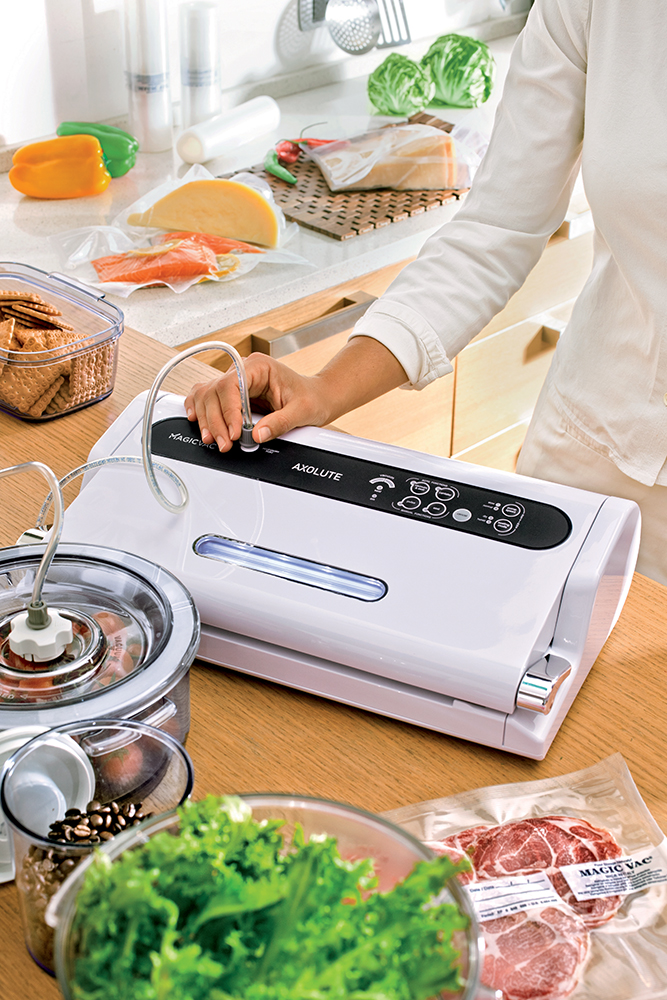What’s a food preservation system
The deterioration of food is caused by chemical reactions occurring in food exposed to air, temperature, moisture, the action of enzymes, the growth of micro-organisms or contamination by insects.
Vacuum packing provides for a total reduction of air pressure inside the package, subtracting oxygen and eliminating volatile compounds. Oxygen in the air causes the deterioration of food, primarily through the oxidation process, which causes a loss of nutritional value, taste and quality. Air, in addition, contributes to the growth of most micro-organisms and causes cold burns that occur on frozen food.
Vacuum packing extend the shelf life of the storage time of most fresh foods, reducing oxidation and preventing microbial growth (bacteria and mould). However, many fresh foods contain sufficient moisture to favour the growth of micro-organisms that can grow with little or no air. To prevent the deterioration of these foods, storage at low temperature is essential.
Micro-organisms, such as mould, yeast and bacteria, are present everywhere but can cause problems only in certain conditions. For example, mould does not grow in environments low in oxygen or in the absence of moisture. To develop, yeasts require moisture, sugar and a moderate temperature, but can grow in the presence or absence of air. Refrigeration slows the growth of yeasts and freezing stops it completely. Bacteria can multiply with or without air, depending on their nature.
Clostridium botulinum is a very dangerous type of bacteria that can grow in environments that do not contain acids, lack oxygen and are exposed for prolonged periods at temperatures above 4°C.
Foods that can be attacked by Botulinum , therefore, are those with low acidity (such as meat, poultry, fish, seafood, pickled olives, eggs, mushrooms, vegetables) and medium acidity foods like most fruits and many vegetables (ripe tomatoes, onions, red hot pepper, figs and cucumbers). To prevent the contamination of this pathogen, it is essential to operate in compliance with hygiene standards and to prevent a dangerous proliferation in preserved foods. These must be refrigerated for short-term storage and/or frozen for long-term preservation. They must, however, be consumed immediately after they are heated.
Immediately consume foods that have been heated in closed MAGIC VAC® vacuum bags. Leaving it to cool to room temperature slowly in its sealed vacuum package allow some pathogenic micro-organisms to multiply in a few hours, up to values dangerous to your health.
Some enzymes that are found in foods cause more obvious changes in colour, structure and taste which depend on their vacuum storage times, from the temperature and, above all/ especially, on the presence of air.
To stop the action of enzymes, vegetables should be blanched briefly through the use of steam or a microwave.
Foods that contain high levels of acidity, such as most fruits, do not require blanching. The absence of air that occurs with vacuums in any case slows down or prevents the action of these enzymes. Insect larvae are often found in many foods low in water or dried and, without vacuum packaging or freezing, these could develop during vacuum storage, contaminating food.
Some products such as flour and grains can contain larvae but, with use of the MAGIC VAC® vacuum packing system these are prevented from turning into insects.

